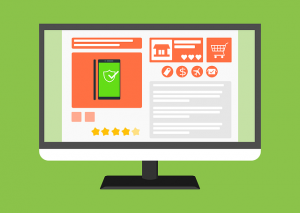
Pharrell Williams wrote and sang dozens of songs you never heard of before he produced one that we couldn’t get out of our heads. In 2014, his “Happy” video went viral. Why? Because it actually made people happy.
Did you know that websites can do the same thing? While you may believe the tech world’s equivalent of Debbie Downers, who say technology is making us all miserable, there’s been some research that says technology is making us happier.
Now, a new study tells us why—and how companies can leverage this insight to boost their websites’ happiness quotient. To understand what makes people happy online, Change Sciences conducted a study of about 8,000 people using 250 leading sites, including ecommerce, entertainment, health, travel and finance. It conducted observational research to look for patterns that produced smiles, “aha” moments, lost-in-the-flow moments, or anything that contributed to a happiness sensation. The study discovered some interesting insights about how to boost happiness online.
Online Happiness Insights
Among the happiness study findings is the fact that—sadly—most online experiences are just OK. The majority of sites and apps don’t make people happy at all. In fact, fewer than 5 percent of all the sites studied were graded as “better” than other sites, according to Change Science. The websites ranked as “better” than others, received happiness ratings of 90 percent or more. They included sites like Amazon, Ally and Apple.
Other study findings include:
- Usability is critical. All happy sites ranked high on ease of use. Without a baseline of usability, sites scored at the bottom for happiness.
- Familiarity boosts happiness. The sites people visit often tend to make them happy.
- More time on a site doesn’t increase happiness. Most people spend an average of five minutes on a website. If they spend more, their happiness doesn’t necessarily increase. However, if they spend more time without success, their happiness drops off.
- Higher happiness equals greater engagement. A higher happiness rating resulted in a slightly broader range of interactions on a website, a likeliness to return, and a probability of sharing the site.
3 Ways to Better Delight Your Website Visitors
How can your company’s website make visitors happier? Luckily, the study found clear patterns. Technology can make people happier when three key principles of happy design are present: ease of use, interesting design and authenticity.
1. Make Your Website Easy to Use
“Sites that made it extremely easy for people to do what they wanted to do, on their own terms, always scored highly for happiness,” stated Change Science founder Pamela Pavliscak. “This is especially true of sites that support difficult, anxiety-producing tasks. … The sense of accomplishment gained from an easy solution to a difficult problem makes people happy.”
Several other website studies have discovered ways to make sites easy to use, including putting important content first, clearing away all distractions and making content scannable:
Place Important Content at the Top and Bottom of the Page
A user behavior study conducted by the Nielsen Norman Group found the time that visitors spend reading content decreases sharply as they scroll below the fold. In fact, 80 percent of the time people spend on a webpage is spent interacting with content above the fold. What’s more, the same study also found that people’s viewing time increases at the bottom of webpages. To leverage this insight, place important content at the top of the page and a strong call-to-action at the bottom.
Optimize Your Website’s Distracting Elements
An online vision study conducted by the California Institute of Technology found that when people are rushed or distracted they make rapid decisions based more on visual influences than on personal preferences. This bias tends to get stronger the more distracted a person is and when they don’t have a strong preference among options. This has big implications in a world full of distractions, because removing them from a website can dramatically shift a customer’s attention in a crowded marketplace.
Use Headings to Boost Site Scan-ability
A website usability study conducted by consultant Gerry McGovern found that people read Web pages in blocks or sections, while quickly scanning for items that closely match what they’re looking for. Eye-tracking studies conducted by the Nielsen Group support these findings, showing that people tend to swivel their reading in a left-to-right manner down a page in an F-shaped pattern. These early online studies have held up in the test of time.
2. Make Your Site Interesting and Creative
According to the Change Sciences happiness study, sites that create a strong sensory experience by being interesting and creative scored higher for happiness. High-scoring sites included Apple, IKEA, WebMD and HGTV—“where people were able to savor the positive moments exploring and came away happy about the overall experience,” stated Pavliscak.
One way to create a more interesting website is to study the design guides of leading websites. HubSpot shared the design guides of 10 leading websites, including the top three—Apple, Google and Starbucks:
- Apple. “Apple’s style guide is especially interesting because it details out how to design for an entire operating system. … [Apple talks] about the rationale behind every single aspect of the operating system’s design. It really gives you a window into the minds of the designers that created [the OS].”
- Google. “Google is pioneering a new design style called Material Design, which exists as a hybrid between skeuomorphic design (gradients, textures, light elements) and flat design (simple, colorful, geometrical). In doing this, they’re hoping to scoop up the benefits that are associated with each design style, while avoiding the drawbacks. … This style guide details out exactly what Material Design is and how Google uses it.”
- Starbucks. “This is one of the most minimalistic style guides … yet, it houses a ton of useful information. It places a heavy emphasis on code and you can tell that it was built by developers, for developers. It lacks brand-related elements, so it walks the line between website style guide and code library.”
3. Be More Authentic
The happiest sites treat people as friends, said Pavliscak. “People don’t want to feel like they are interacting with a machine, or with a bland corporate entity. … Authenticity is the starting point. People can easily sniff out customer stories that feel too produced or reviews that seem fake, and they tune out anything that comes across as overly self-important.”
If you’re wondering if consumers think your website telegraphs authenticity, consider conducting a survey using the Perceived Brand Authenticity (PBA) scale created by an international team of researchers. It was recently published in the Journal of Consumer Psychology. Researchers found that authenticity increases emotional brand attachment and word of mouth, and drives brand choice.
Researchers compiled a simple definition of authenticity based on a review of existing research: “The extent to which consumers perceive a brand to be faithful toward itself, true to its consumers, motivated by caring and responsibility, and able to support consumers in being true to themselves.”
They also discovered four dimensions of authenticity that were reliable across different brands and cultural contexts:
- Continuity—brands being faithful to themselves
- Credibility—brands being true to their consumers
- Integrity—brands being motivated by caring and responsibility
- Symbolism—brands supporting consumers in being true to themselves
According to the researchers: “These four dimensions capture the key idea that authenticity is far more than a simple ‘objective’ attribute; authenticity has psychological, subjective, and symbolic value too—authentic brands are true to us personally, stand for what we stand for, and help us be true to ourselves.”
As businesses spend more and more time and money creating quality online content, offers and apps, it just might be smart to also invest some time considering how to create happiness. It worked for Pharrell Williams!
Digital & Social Articles on Business 2 Community(37)







